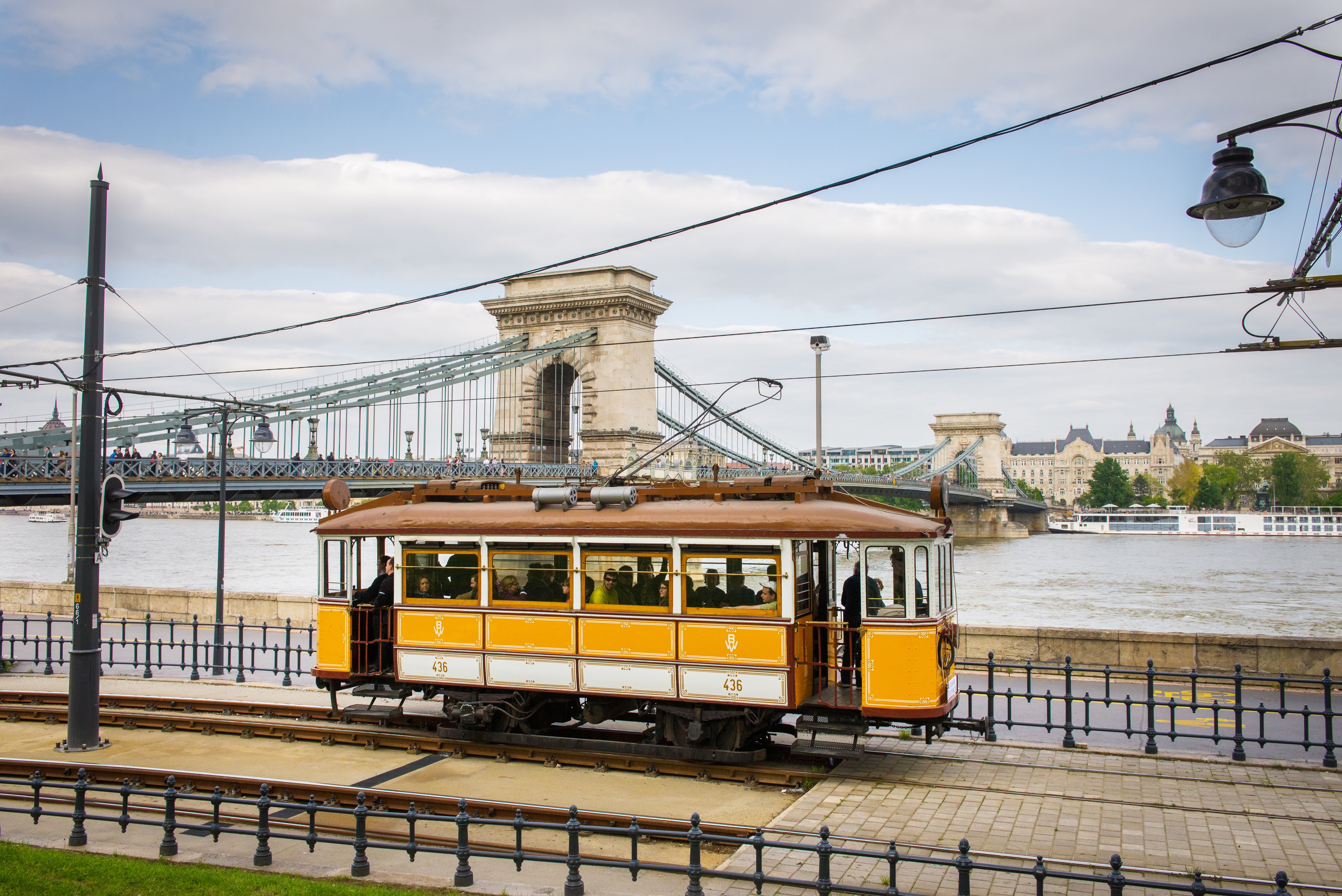Buda Castle Funicular
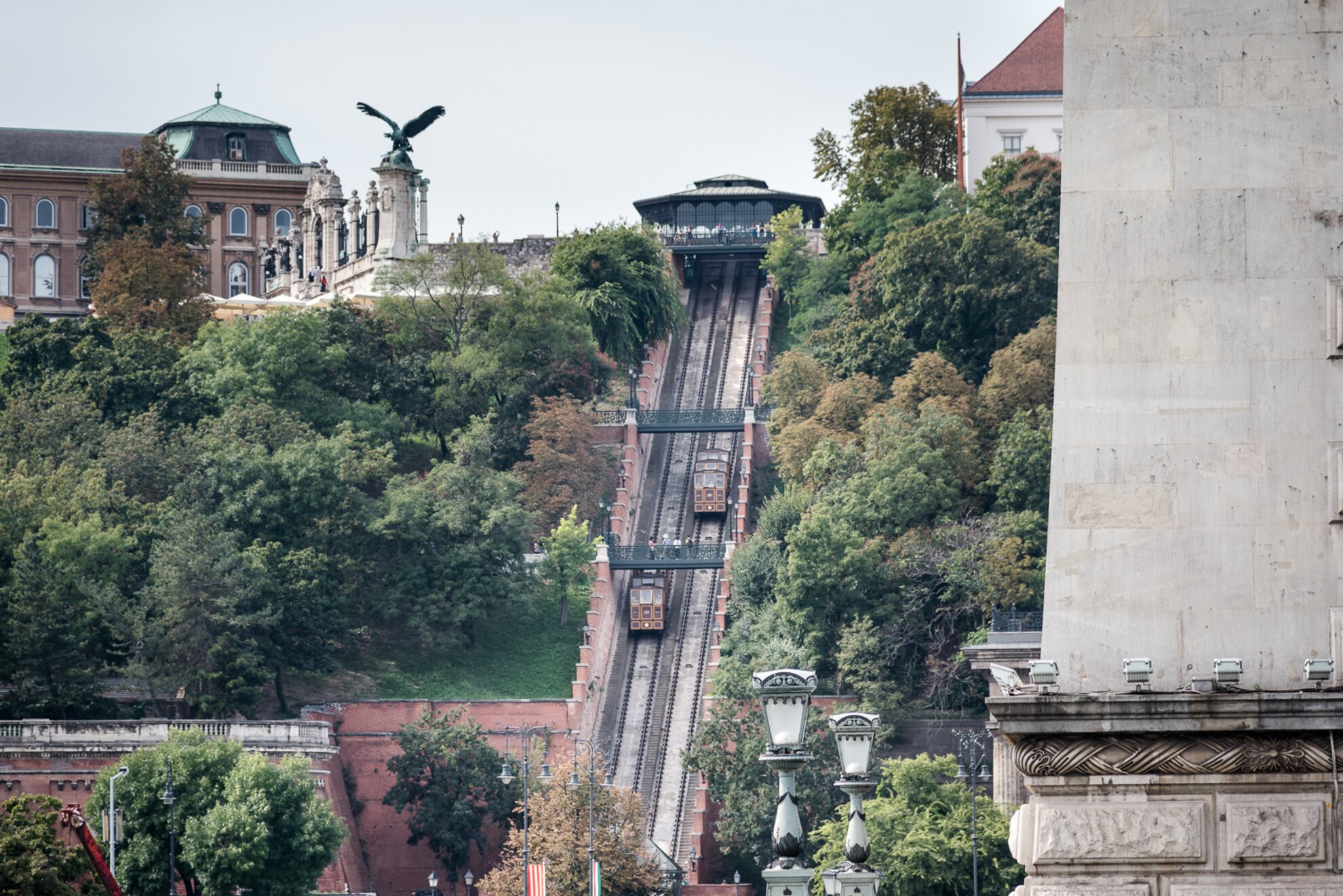
Soar skyward to the Castle District’s landmark-lined plateau while soaking in a rising vista over the Chain Bridge and Danube Promenade during the short but extremely steep trip on the perennially popular Buda Castle Funicular. After opening in 1870 as the world’s second-ever urban funicular, this counterbalanced two-car cableway became the preferred conveyance for Buda Castle’s clerical workers, and by the 1930s it was an established Budapest tourist attraction. The funicular stations were bombed during World War II and the diagonal railway remained inoperative through most of the Soviet era, but in 1986 service resumed with new wooden carriages built to resemble the original cable cars.
Route: Clark Ádám tér to Szent György tér, operating year-round
Tickets: Single 1,200 HUF (700 HUF children 3-14). Return 1,800 HUF (1,100 HUF children 3-14). Children under 3 ride free.
More details
Children’s Railway
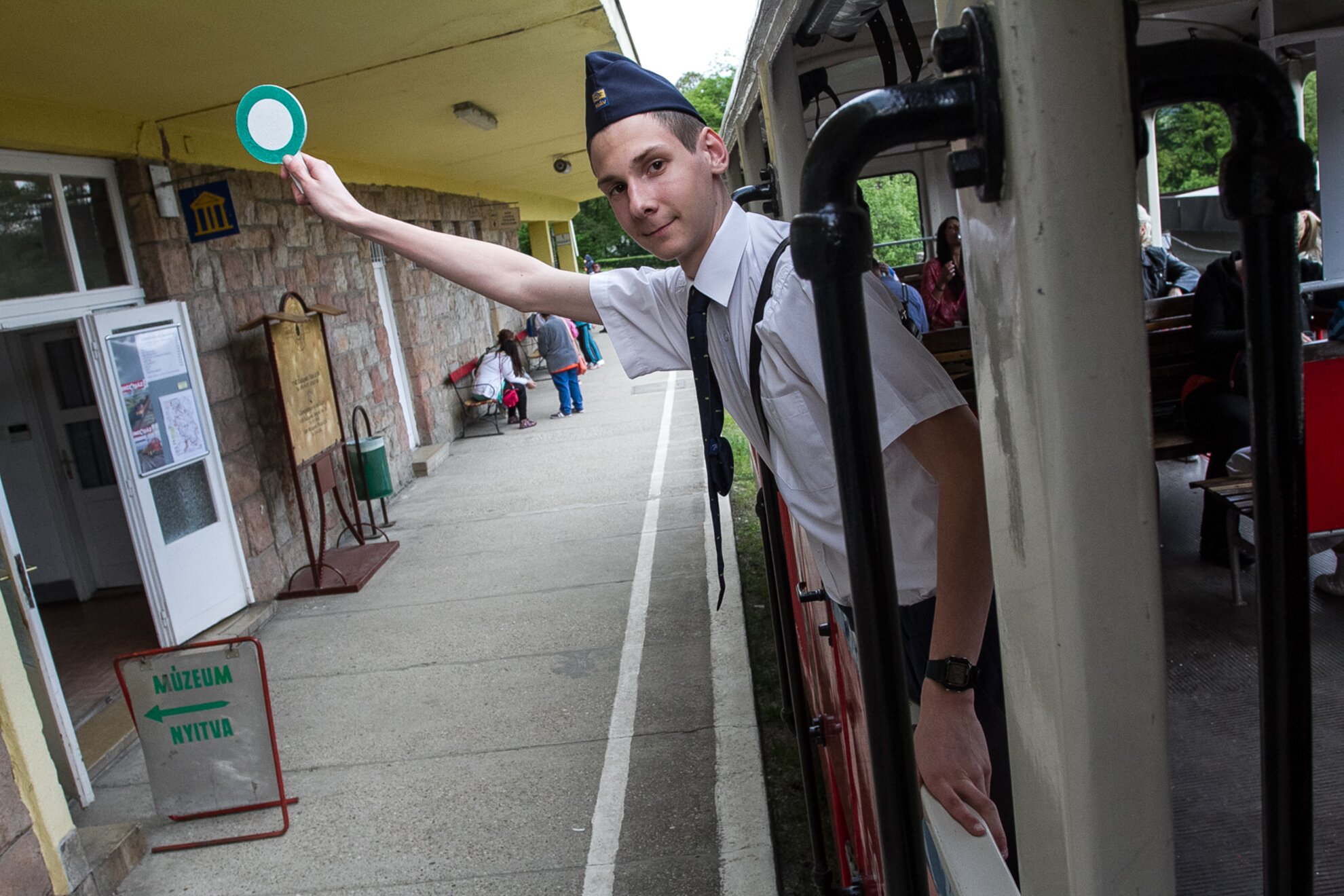
Ever since this narrow-gauge railroad began chugging along panoramic peaks of the Buda Hills in 1948, its conductors, signalmen, and other workers are kids providing surreally charming journeys for all ages throughout the year. The Children’s Railway is a fully functional vestige of Hungary’s time under Communism, and although the 11-kilometre route features sweeping views over Budapest and surrounding woodlands, the Soviet-era rolling stock is equally fascinating – summertime passengers trundle aboard open-sided cars, while heated enclosed train carriages wrap riders in cosy comfort as they plow through snow-covered summit forests in winter. The Children’s Railway Museum awaits at the Hűvösvölgy terminus.
Route: From Széchenyi-hegy to Huvosvölgy, operating daily year-round (except Mondays from September to April)
Tickets: 800 HUF (400 HUF children 6-17) More details
Cogwheel Railway
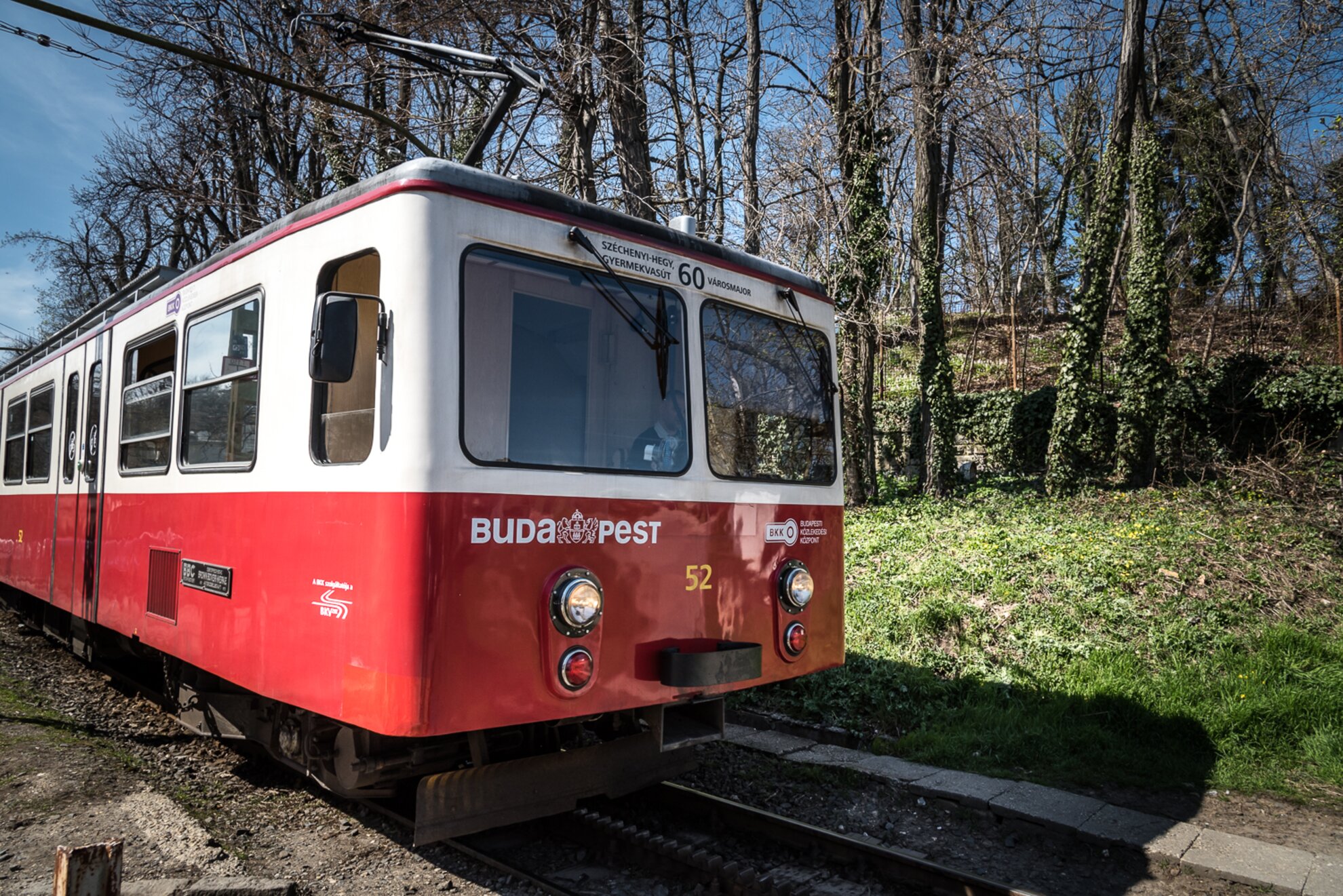
Scale Buda’s steep slopes aboard a truly unique form of transit: the 144-year-old Cogwheel Railway travels every day to the apex of Széchenyi Hill along distinctive tracks traversing precipitous inclines that no ordinary tram could ever climb. A notched third rail provides the traction for a powerful gearwheel that propels each of these two-carriage trains; the vehicles currently servicing this regular public-transport route date back to 1968, when the Cogwheel Railway was most recently refurbished. The slow-but-scenic journey begins in central Buda, ascends a tree-lined mini-mountain dotted with grand villas, and ends steps away from the Széchenyi Hill stop of the Children’s Railway.
Route: From Városmajor to Széchenyi-hegy, operating daily year-round
Tickets: 350 HUF (the cost of an ordinary single-ride BKK ticket) More details
Duna Heritage Tram
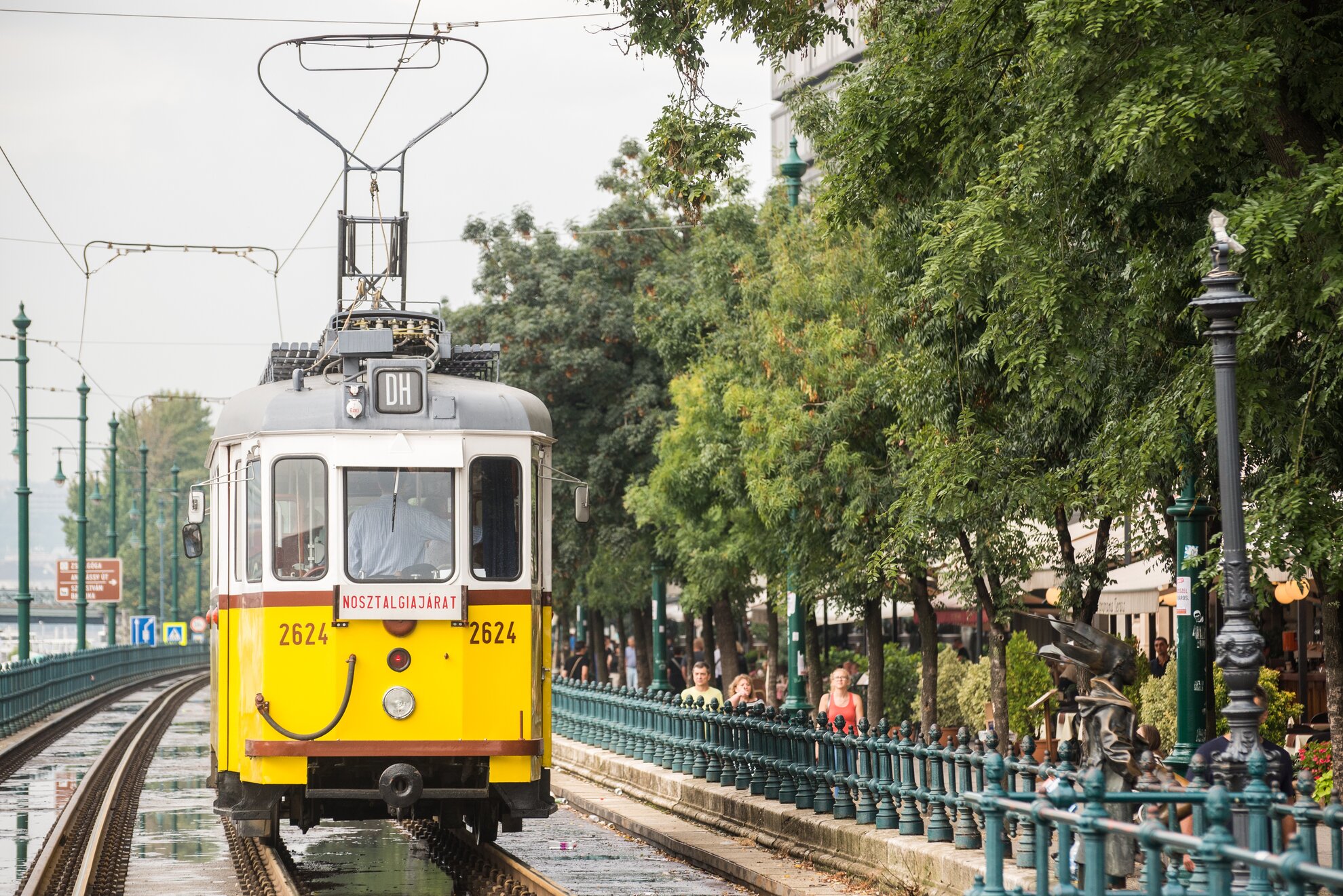
Budapest’s riverside tram line 2 features stunning views over monumental sights such as Buda Castle, the Chain Bridge and the Parliament building. This summer, sightseers can enjoy these landmarks from within another historic Budapest attraction – the Duna Heritage Tram, a double-axle streetcar built in 1906 and continually upgraded over the decades so that it can still carry passengers on line 2 every Saturday. In the late 1950s, the wooden frame of this venerable vehicle was replaced with steel, then the exterior was modernised in the ’70s, and a private buyer took it to Amsterdam in 1984. Finally this well-travelled tram rolled home to Hungary in 2004 to take a prime place in Budapest’s nostalgia fleet.
Route: Tram line 2 (Jászai Mari tér to Közvágóhíd), operating Saturdays from May to October
Tickets: Single 500 HUF (300 HUF children) More details
Heritage Bus
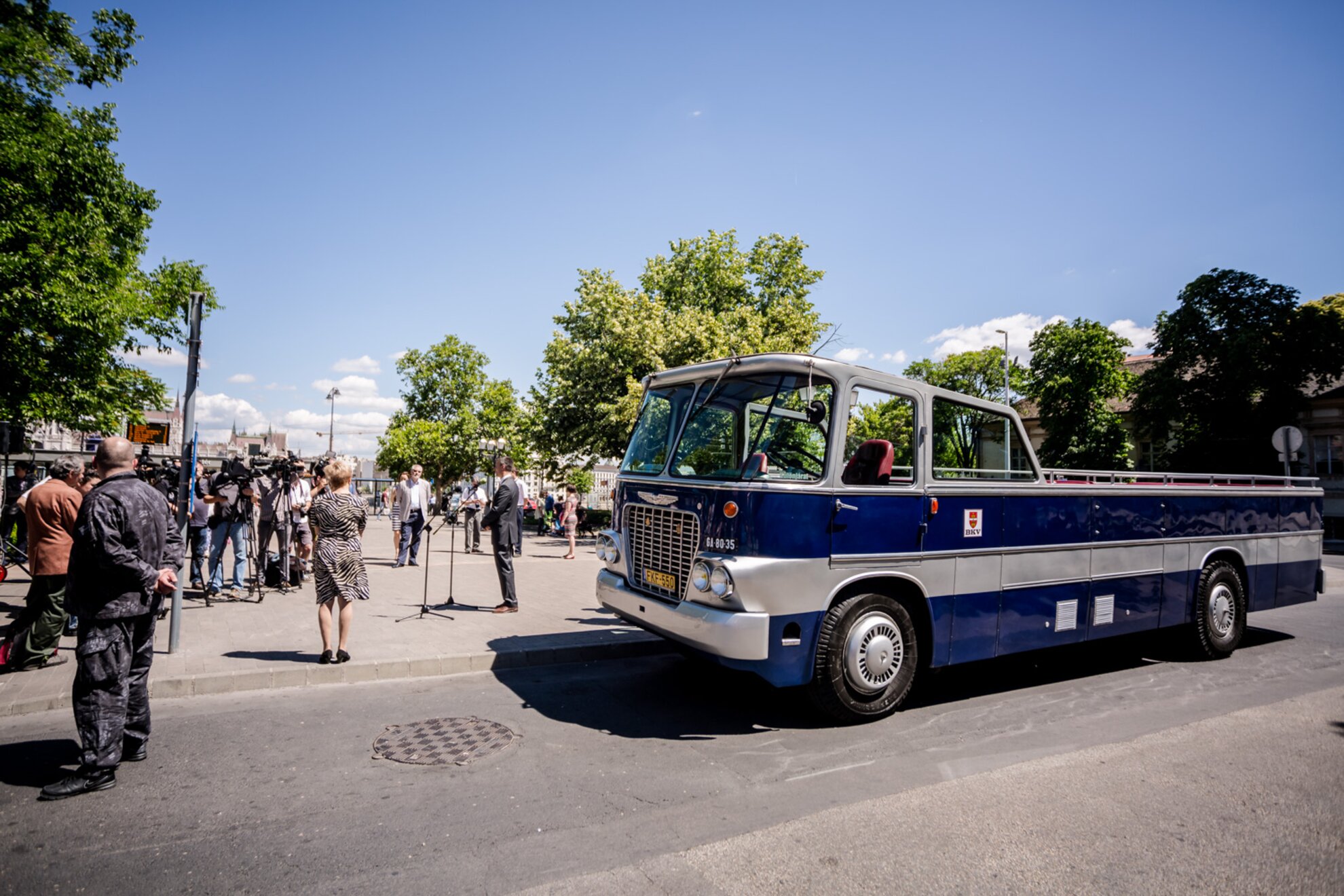
Take a magical mystery tour aboard the coolest coach ever built by Hungary’s own bus company – the world’s last roofless Ikarus 630, dating back to 1971 and refurbished to its original gleaming glory. After years in private ownership, this 38-seat sunshiny sightseeing machine is now welcoming public passengers again for special Heritage Bus excursions around Budapest on the second Sunday of every warm-weather month. Passengers can pick a scarlet seat for a city safari to spot riverfront sights and downtown monuments, all while waving at passers-by excitedly checking out the classic convertible coach. (On rainy excursion days, passengers can ride in an enclosed vintage Ikarus bus.)
Route: Return journeys begin and end at Deák Ferenc tér, on the second Sunday of each month from May to October
Tickets: Single 500 HUF (300 HUF children) More details
Millennium Underground
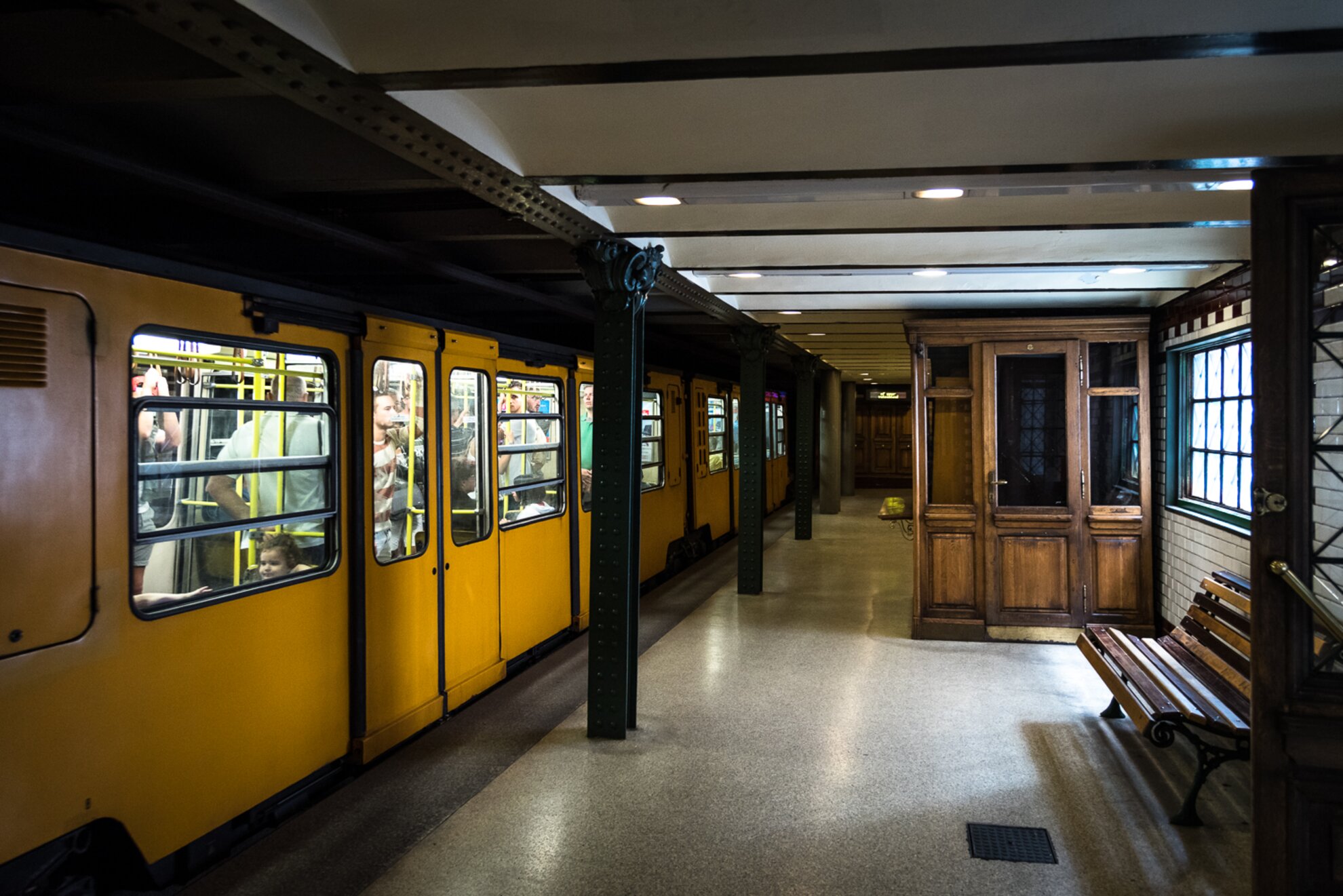
Continental Europe’s first subway winds from central Budapest’s Vörösmarty tér to run beneath the length of tony Andrássy út and stop by the Széchenyi Baths before reaching suburban Pest. Completed just in time for Hungary’s 1896 Millennial Jubilee – a grand celebration commemorating the thousandth anniversary of the Magyars arriving in Central Europe – this metro carried esteemed passengers including Habsburg Emperor Franz Josef, making this one of the world’s few undergrounds ridden by royalty. Nowadays this living relic serves thousands of passengers every day as Budapest’s M1 line. Check out the Underground Railway Museum within a disused M1 tunnel at the Deák Ferenc tér stop.
Route: Vörösmarty tér to Mexikói út, operating daily year-round
Tickets: 350 HUF (the cost of an ordinary single-ride BKK ticket) More details
Snow White Vintage Boat
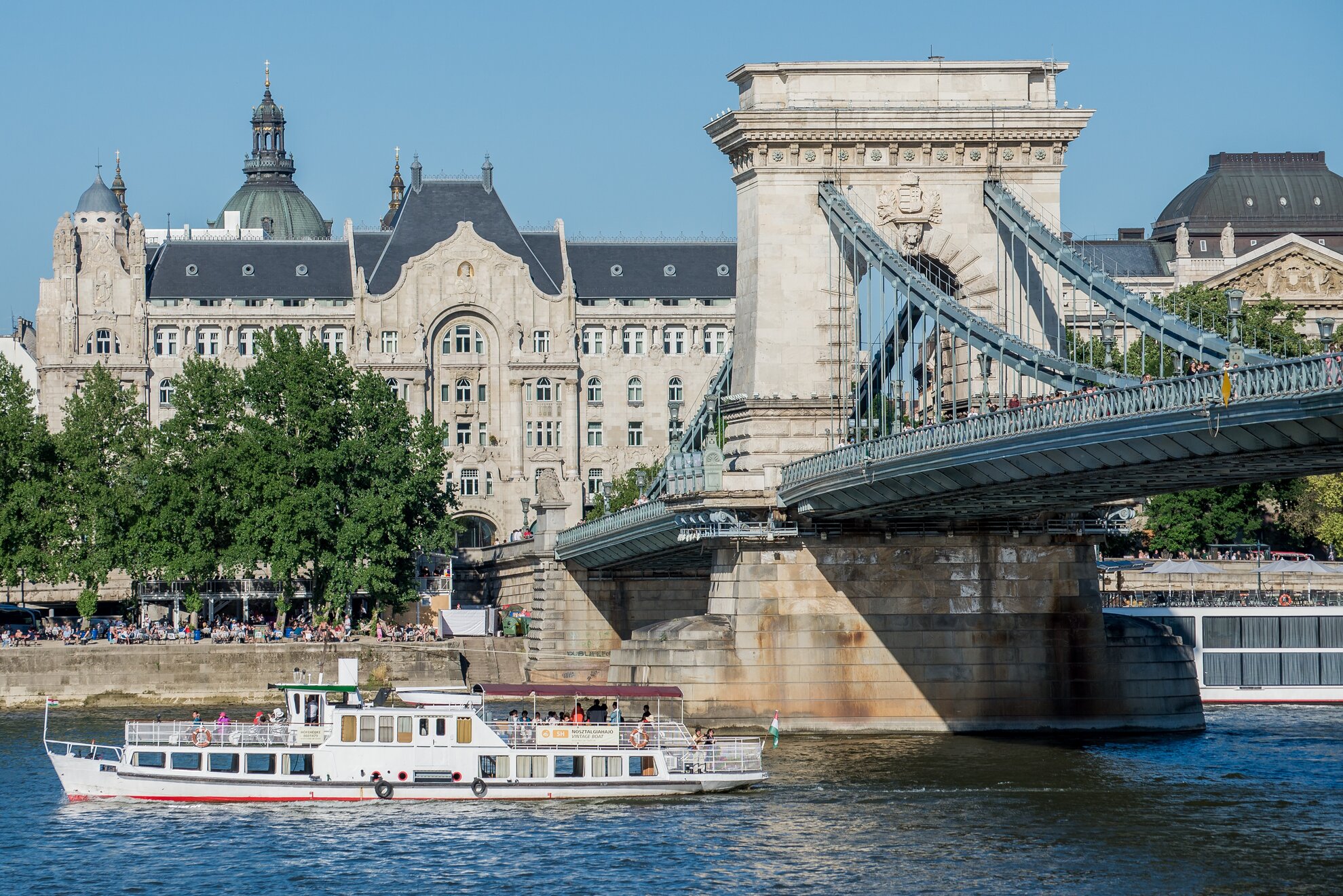
Built in Pest’s dockyards in 1895, the mighty Snow White riverboat still plies the Danube through central Budapest during special Saturday voyages all summer. This 19th-century ship was repeatedly refurbished over the years (it’s no longer steam-powered) and features plenty of indoor and outdoor seating for admiring both the Buda and Pest waterfronts, but make sure to take a look inside the captain’s classic wheelhouse on the bow deck. The journey can begin at any of several downtown docks for Budapest’s regular ferry line (including Petőfi tér, Batthyány tér and Jászai Mari tér) before cruising around Margaret Island and downriver past Gellért Hill, until reversing course at Liberty Bridge.
Route: Complete journey begins at Jászai Mari tér ferry dock (pier 4) before a stop at Margaret Island and uninterrupted trip to Liberty Bridge and back with stops, on Saturdays from May to October
Tickets: Single 750 HUF (550 HUF children) More details
Thermal Heritage Tram
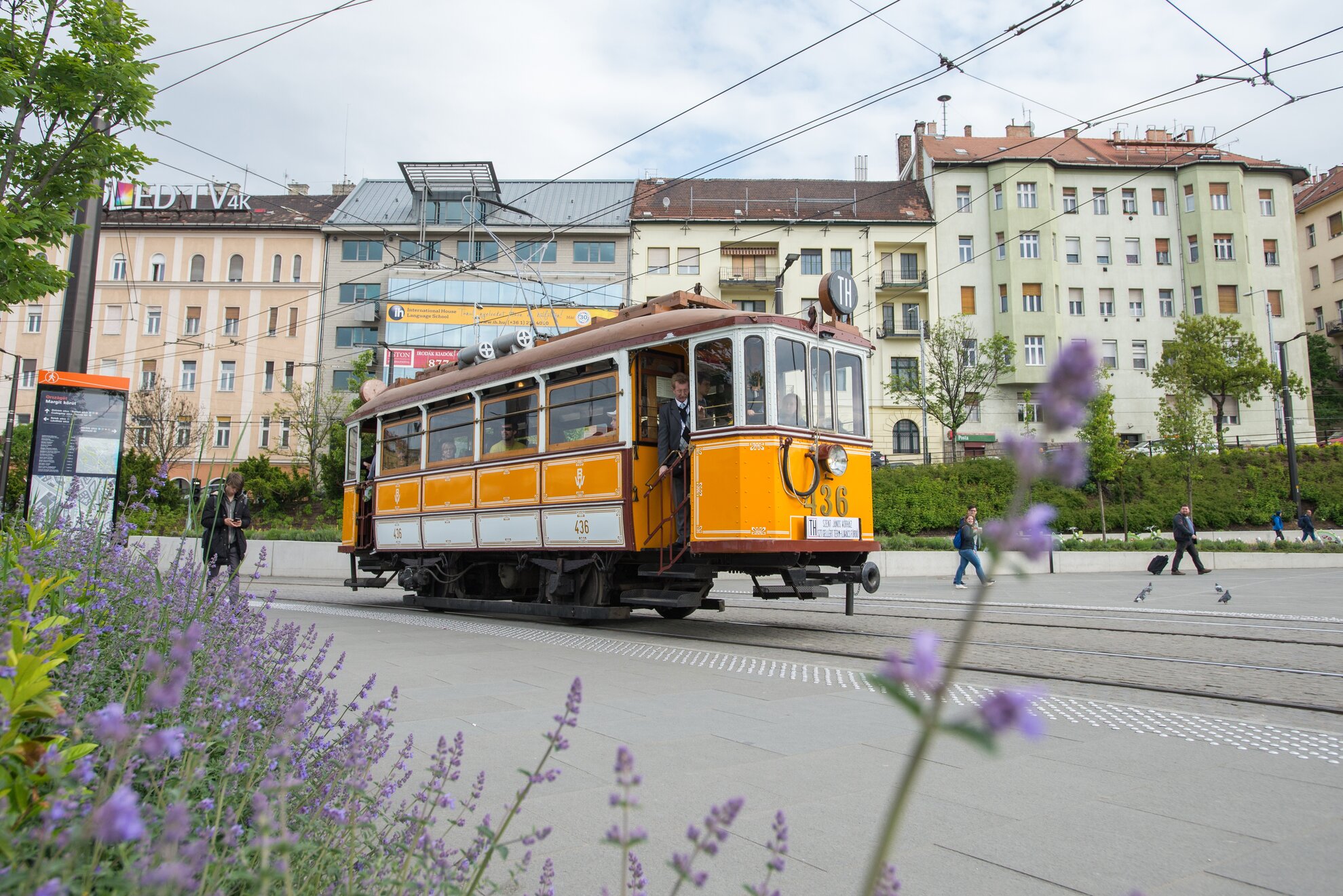
The healing waters of Budapest’s thermal spas have remarkable revitalising qualities, and now you can ride between some of the city’s most famous baths aboard a rejuvenated streetcar dating back to 1913. After faithfully carrying urban passengers for almost seven decades, this wooden-framed tram was retired and refurbished in the ’80s to appear in a transport museum. Now it’s making the most of its golden years with an active lifestyle of taking people between Gellért Baths, Rudas Baths and Lukács Baths on Sundays until October. The Thermal Heritage Tram follows Buda’s riverfront rails to provide moving panoramas over the Danube Promenade, Liberty Bridge and many other alluring city sights.
Route: Szent János Kórház to Szent Gellért tér circle route, on Sundays from May to October
Tickets: Single 500 HUF (300 HUF children) More details
